


Tarot of the Holy Light Icon
Moon  The High Priestess
The High Priestess
Sun  The Fool
The Fool
Mercury  The Star
The Star
Venus  The Empress
The Empress
Mars  Strength
Strength
Jupiter  The Emperor
The Emperor
Saturn  Judgement
Judgement
Primal Air  associated with Uranus; The Fool
associated with Uranus; The Fool
Primal Water  associated with Neptune; Death
associated with Neptune; Death
Primal Fire  associated with Pluto; The World
associated with Pluto; The World
Tarot of the Holy Light:
A Continental Esoteric Tarot
Volume One
Published by Noreah/Brownfield Press
Editing and Art direction by Michael Dowers
Production by Paul Baresh
Production Assistance by Michael Dowers
Front Cover by Patrick Dowers
Associate Editor: Christine Payne-Towler
Thanks to: Mihir Chandaria, Tia J. Finnigan, Angel Lozada, Corina Bardasuc, Patrick Dowers, Fortuna Aphro, Jessica Schiek, Roger Walco
Tarot of the Holy Light 2015 Christine Payne-Towler & Michael Dowers/Noreah/Brownfield Press. All rights reserved.
Visit the Tarot University website: www.tarotuniversity.com.
First Noreah/Brownfield edition: March 2015
Table of Contents
Tarot of the Holy Light:
A Continental Esoteric Tarot
s
Bibliography
Tarot of the Holy Light
A Continental Esoteric Tarot
Preface
The writing project that became this book started ten years ago. I was approached by the founding editor of Aeon Books to compose a volume on the history of the Continental Tarots. The skeleton for that review of the cards was assembled from the 78 essays I had written for the online interpretive service at www.Tarot.com. That manuscript only got to the rough-draft stage before circumstances beyond control demanded that it be set aside. Right about the same time, a Higher Power brought Michael Dowers into my life, and within just a few years Tarot of the Holy Light was under way.
Michaels attraction to the alchemical art of 17th and 18th century Alchemy parallels my own. This common interest gave me a perfect excuse to look behind and beneath the modern Continental representatives (Levi, Christian, Papus, and Wirth, primarily), digging deeper into the roots of the inherited model wherever they might lead. Michael has a gift for rendering complex ideas into simple terms, which gives him an instinctive knack for occult illustration. Therefore, I happily handed over all of my resources on alchemical art, along with my essays, for him to illustrate. My intent at that point was still to produce a volume that would summarize the esoteric thrust of the Continental Tarots from their first appearance in Europe to the 20th century.
I have a particular categorical habit of mind that allowed me to think through, design, and interpret a very successful commercial online Tarot vending machine in 1998. After long study of the matter, it seems obvious that our Renaissance, Reformation, and Enlightenment predecessors were equally well positioned to exploit Tarots recombinant qualities in just the same way I did for that project, since the Tarot of the 1500s is fundamentally the same as the Tarot of today. The visual format of the graph or information-grid penetrated into Europe from their Arabic neighbors to the east and south during the pre-Renaissance of the 12th and 13th centuries. This allowed Westerners to visualize and understand the idea of a modulating array of related values that interweave into a connected network. Raymond Lully made this style of thinking explicit in his combinatory wheels-within-wheels. Later Campanelli went so far as to create a three-dimensional memory theater to demonstrate the catalogue of interpenetrating forces and vectors that inhabited the magical universe of the times. The book you are holding is the boiled-down concentrate of these ideas derived through their natural historical channels as applied to the outline of Tarot.
When we published Tarot of the Holy Light in September of 2011, we had no idea how popular it would become practically overnight. Within months it was voted sixth best deck for 2011 at the huge international forum AeclecticTarot. Subsequently, author and entrepreneur Caroline Kenner approached us to contribute the 78-card essays to a computer app she and her husband were producing under the business name The Fools Dog. When I shared with her the state of the essays at that point, Caroline wisely pointed out that they needed another rewrite to make them suitable for the kind of uses they were designing into their service. I am forever grateful for her tact and patience as I spun through the essays again to make sure that I fully justified the primary themes and influences detailed on every card. Before her feedback I was still thinking theoretically, viewing our pack as a set of flashcards exemplifying the esoteric principals that are embedded in the Continental tradition. After the revision for The Fools Dog, it became clear that Tarot of the Holy Light was destined to become a working deck around the world.
In the wake of that release, I have edited these chapters yet again, this time to include the influences that arent expressly detailed on the faces of the cards. These deeper values forced their way into my consciousness as a result of Michaels artistic choices because he drew so much from the art and visionary tour-de-force that emerged from the work of Jacob Boehme, an esoteric synthesizer writing at the beginning of the 1600s. The results of that study became so extensive that we have decided to separate these chapters into a book of its own under the title Foundations of the Esoteric Tradition. Splitting this work into two has allowed us to focus this volume on the mature fullness of these 78-card essays, constituting the owners and operators manual for Tarot of the Holy Light.
The decision to separate the two books has been agonizing for me, considering that in my imagination they exist as the two lobes of one brain. I battled the idea for over a year before I finally gave in to the inevitable. We have gone to great lengths to ensure that this volume will stand on its own as it confines itself largely to the material, emotional, and psychological universe of the awakening individual. Consider it a given that the attentive reader will identify points in the text where more commentary would be desirable, but the requisite explanations are not to be found within these covers. The rest of the story will be found in the companion volume,
Next page
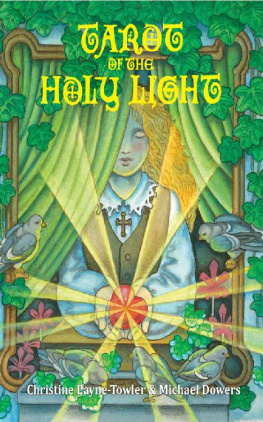

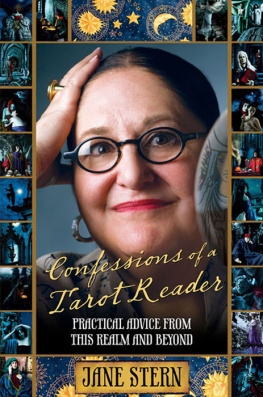

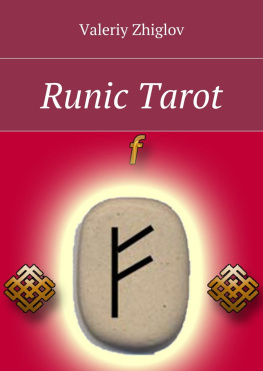
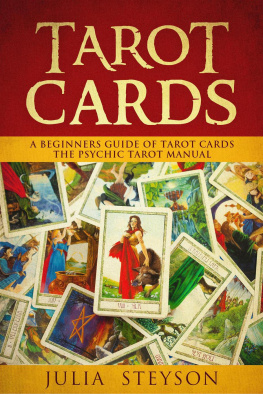
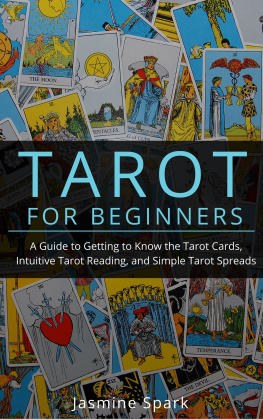

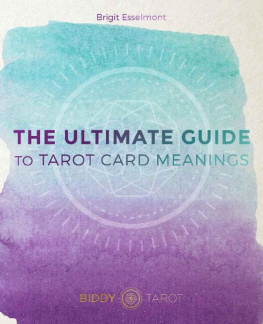


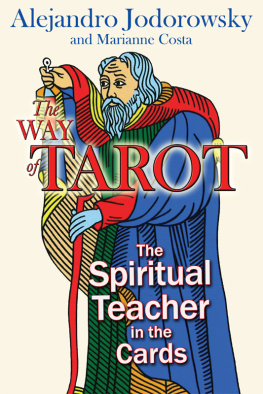




 The High Priestess
The High Priestess The Fool
The Fool The Star
The Star The Empress
The Empress Strength
Strength The Emperor
The Emperor Judgement
Judgement associated with Uranus; The Fool
associated with Uranus; The Fool associated with Neptune; Death
associated with Neptune; Death associated with Pluto; The World
associated with Pluto; The World